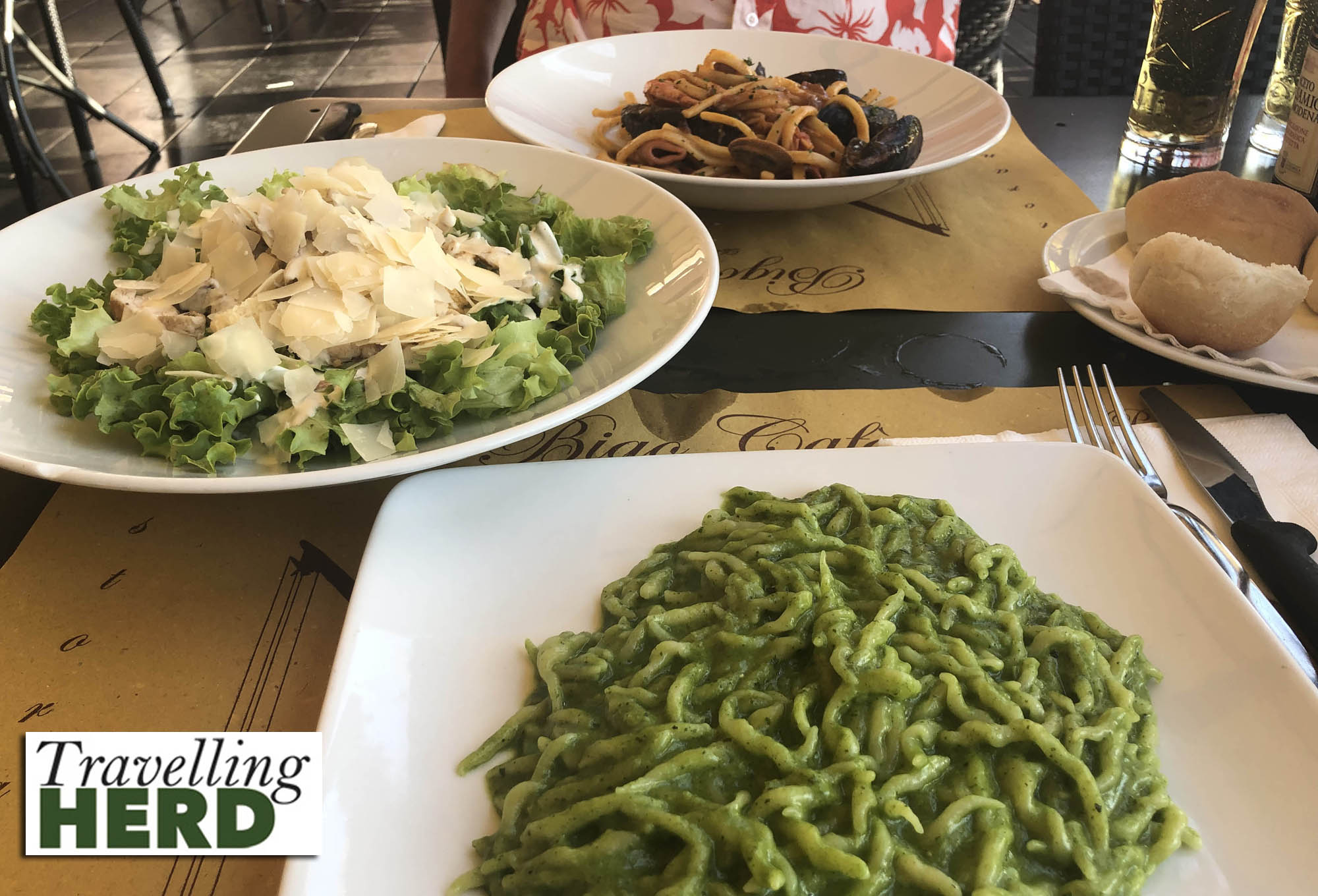13th July 2019
Genoa is the sixth largest city in Italy and is said to be the birthplace of pesto – that fantastic fusion of basil, pine nuts, garlic and hard Italian cheese which has become both a store cupboard staple and the basis of many delicious, impromptu meals in innumerable households across Europe and beyond. Matilda was therefore determined to eat pasta with fresh pesto alla Genovese in the city which gave it its name [see Dish of the Day].
Having deposited our luggage we strolled into the centre of the city to take in some sights. Genoa has a proud maritime tradition and as well as an historical sailing ship with an outsized figurehead [we assumed fake] . . .
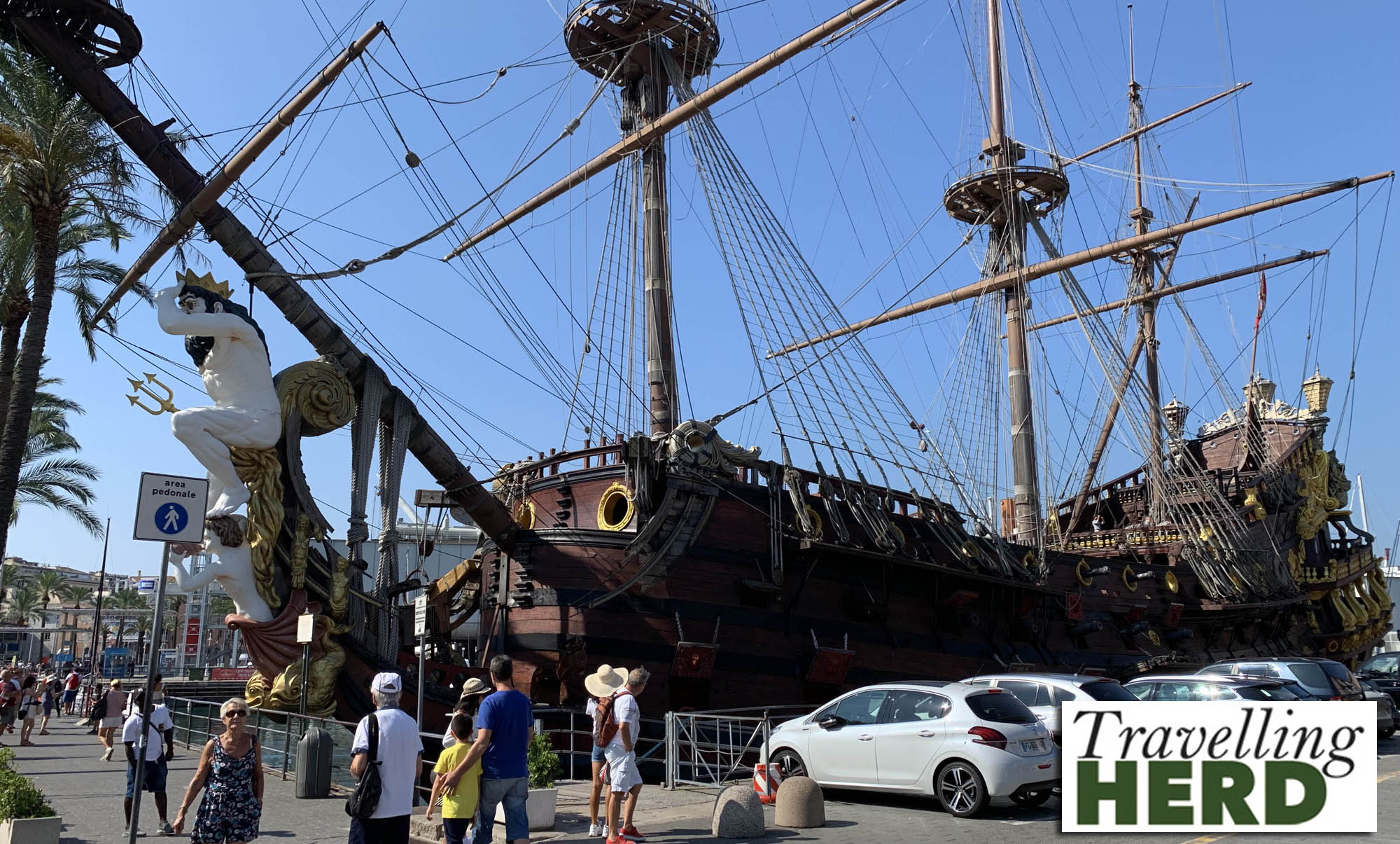
. . . there is also a submarine, now part of the Maritime Museum, moored in the harbour area.
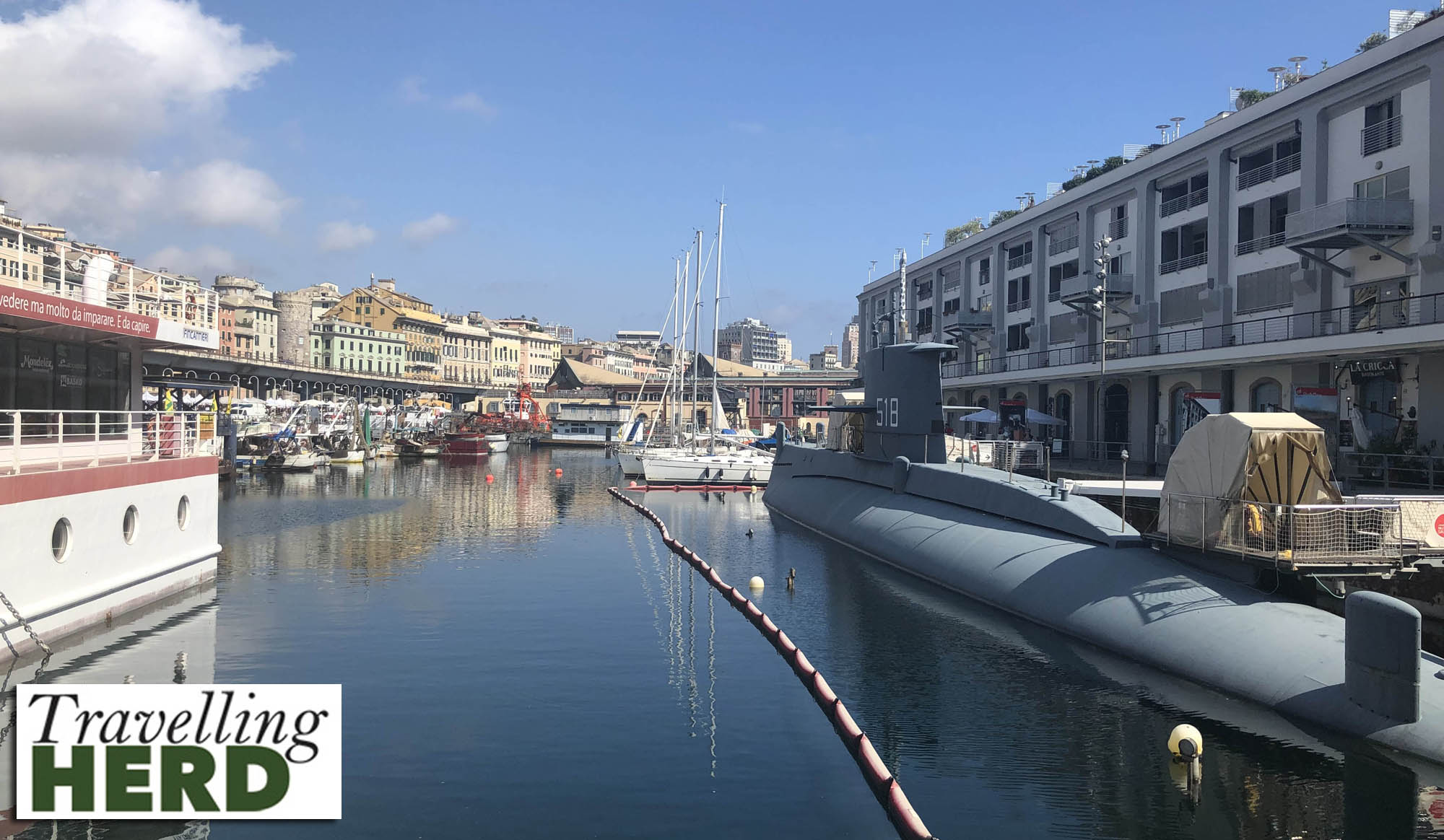
The town itself has many other attractions including an Art Nouveau public lift which Matilda had identified as a less sweaty means of ascending in extreme heat to see the views, but which we failed to find at ground level. We therefore climbed up a multitude of steps to the top and then took the lift down in an exact reversal of Matilda’s plans and expectations.
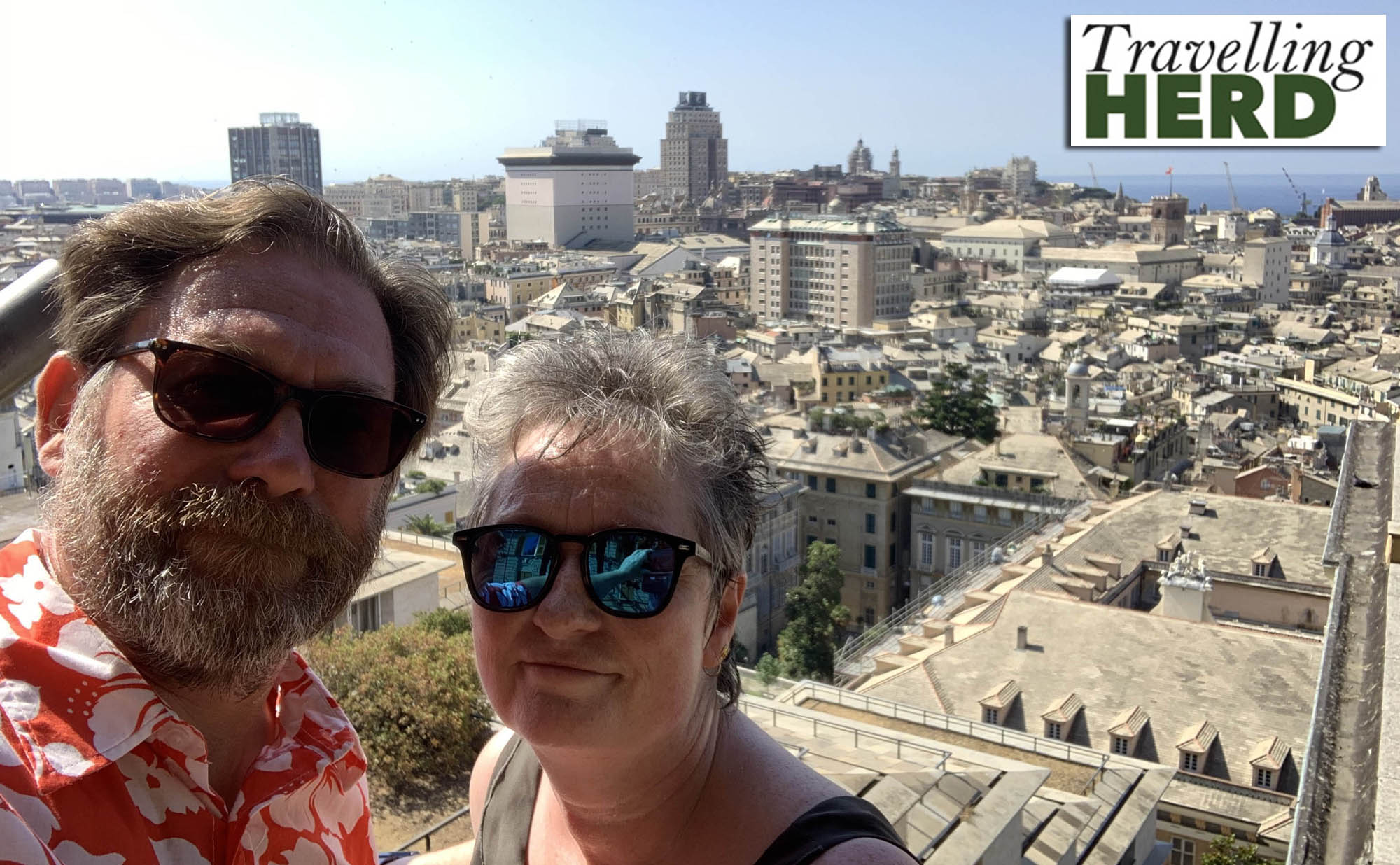
The views of the city were spectacular although the lift itself probably looks more impressive from the outside, whilst the walkway at ground level features some very attractive tiles.
There is also a conveniently situated gelateria near the bottom of the lift and when in Italy ice cream is an essential part of the diet.
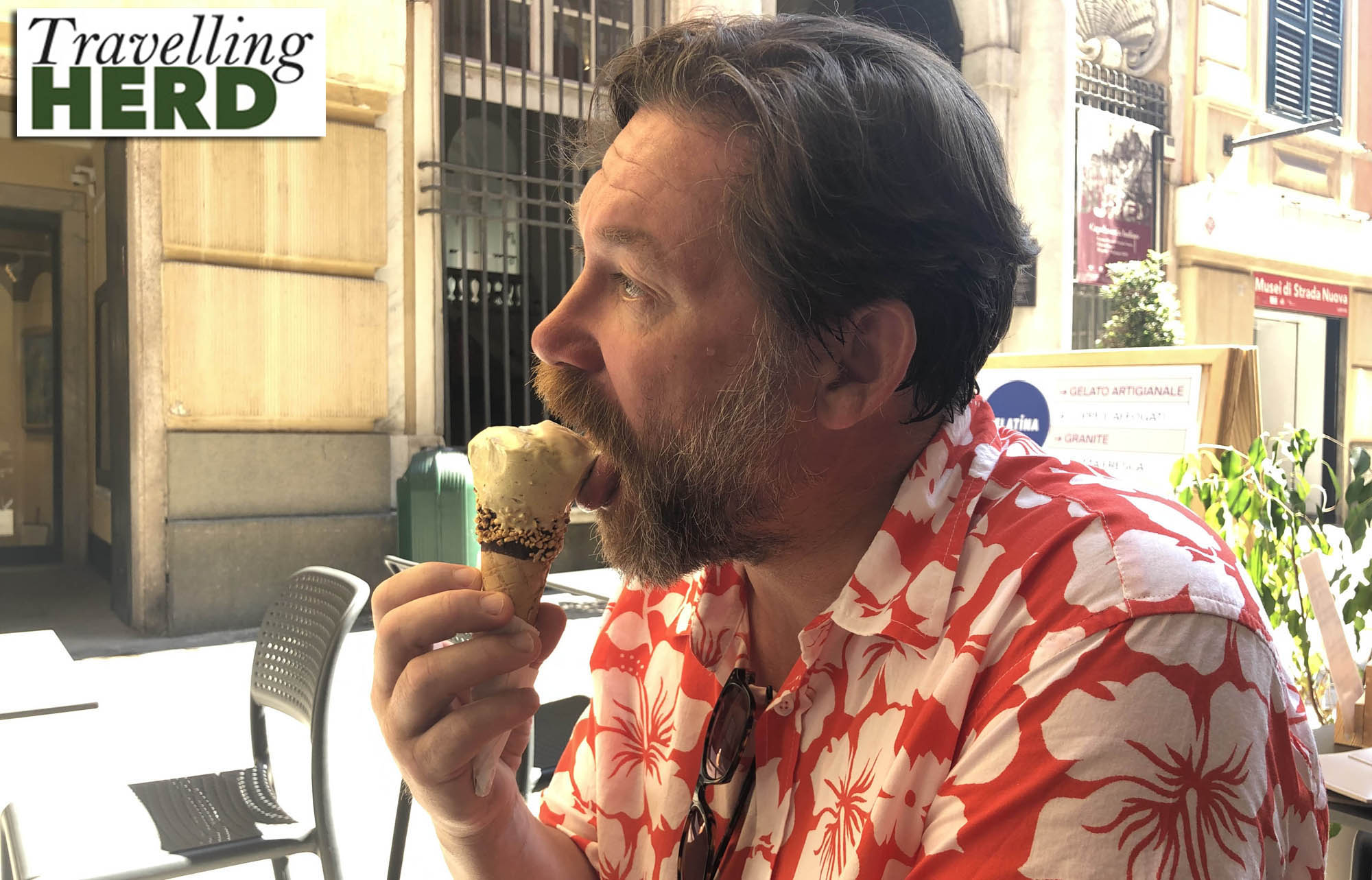
The fountain in the Piazza de Ferrari provided some welcome, wind-borne, cool spray . . .

. . . and we were initially delighted to see the English flag flying, but apparently Saint George is the patron saint of Genoa as well as England.
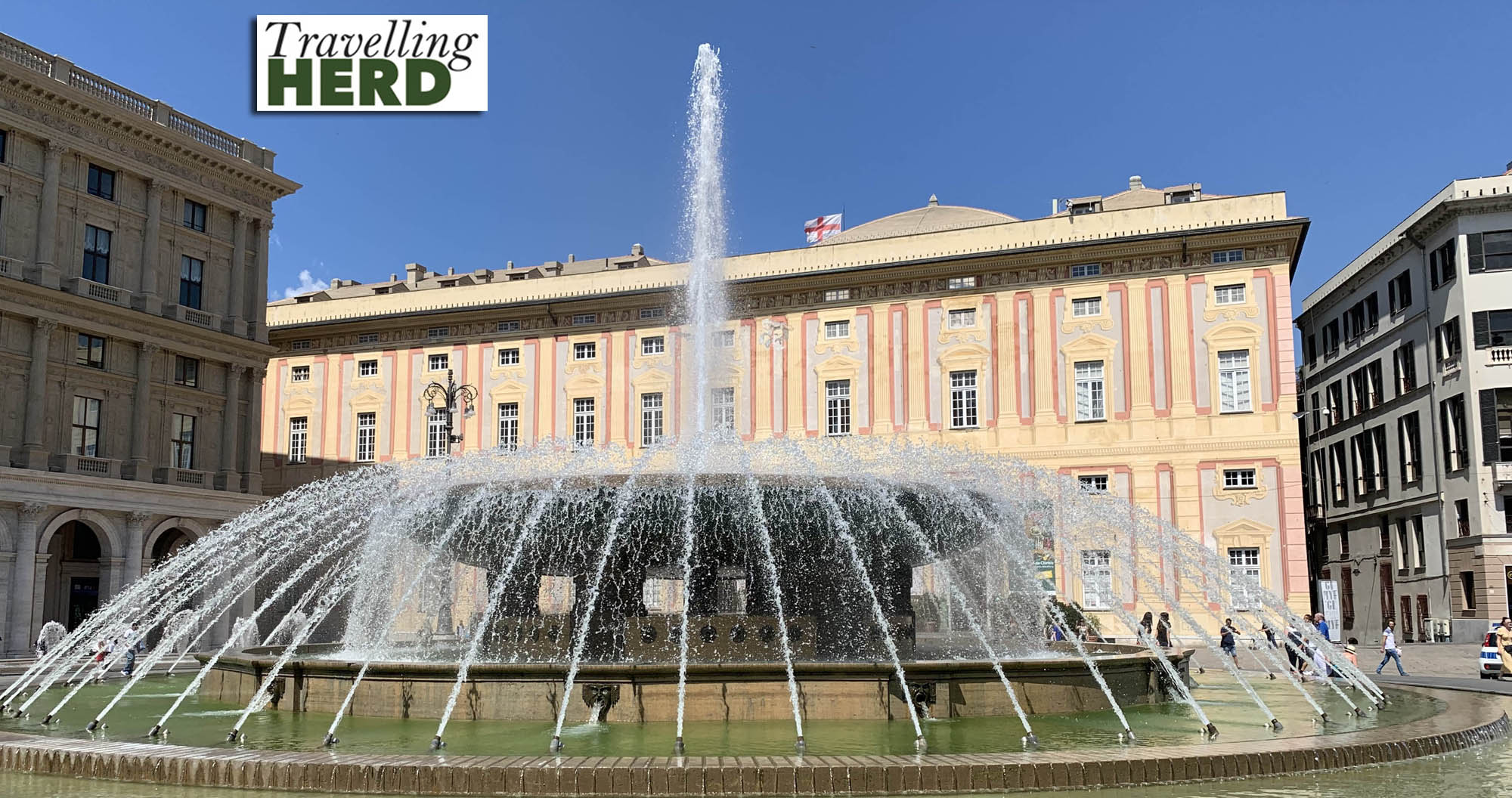
The striated, monochrome Cattedrale Di San Lorenzo is a striking building with soaring columns, a light, airy interior and . . .

. . . a statue of a most lachrymose lion standing guard outside. Only someone with a heart of stone wouldn’t want to give him a hug.
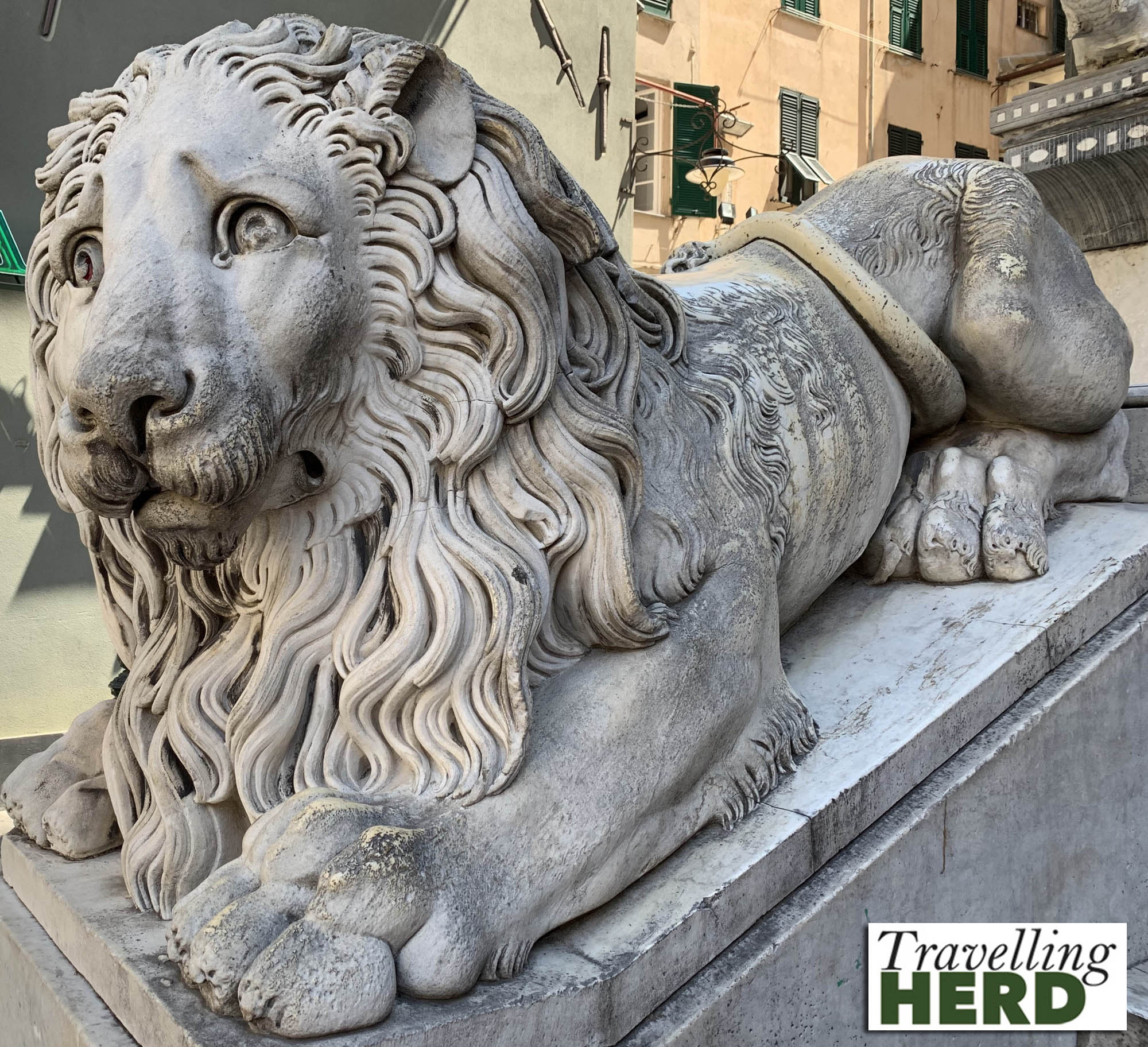
The Via Giuseppe Garibaldi became a designated UNESCO World Heritage Site in 2006 and is lined with the palazzos built by rich Renaissance merchants. . .

. . . including the Palazzo Tursi.

Our route then took us past the Porta Soprano, also known as Porta Sant’ Andrea, one of the few surviving gates in the ancient city walls. These defences were built between 1155 and 1159 and are sometimes known as the Barbarossa walls, after a Swabian emperor who captured Milan and demanded taxes from Genoa, which the proud citizens declined to pay.
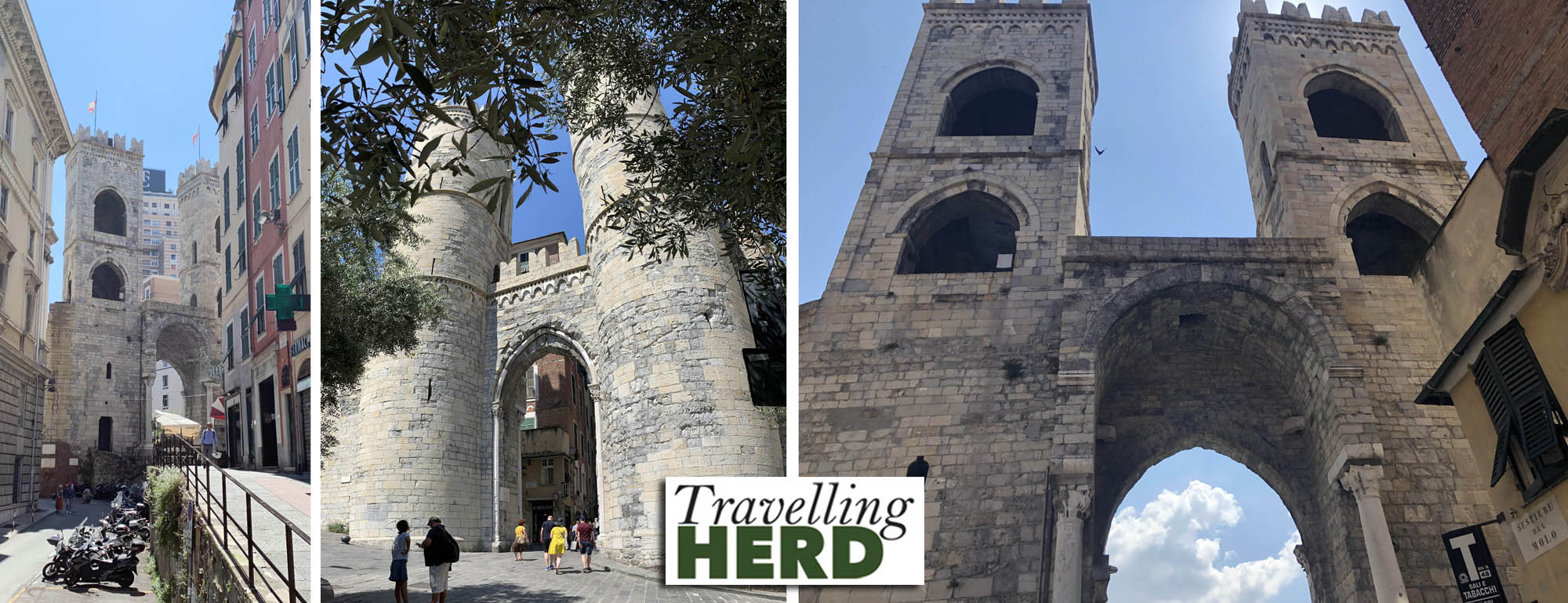
The Church of Jesus and Saints Ambrose and Andrea seemed to have a rather cumbersome name but was nevertheless beautiful inside.
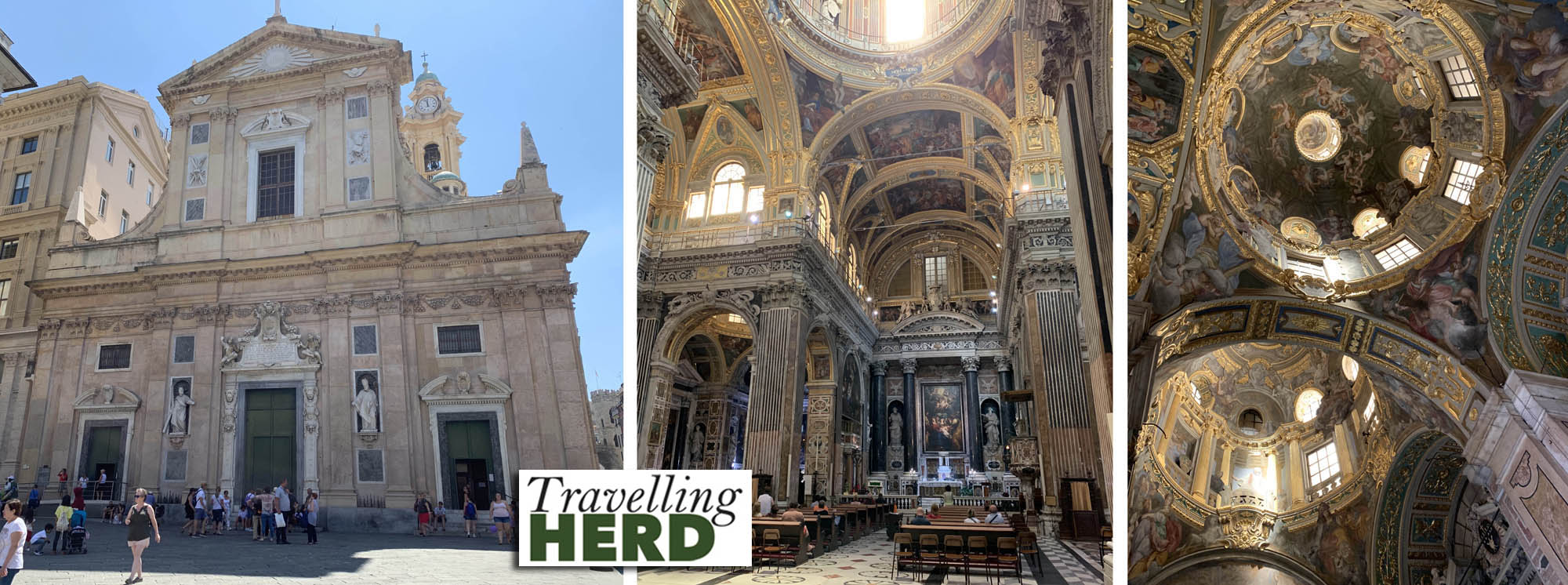
We couldn’t help but admire another classic piece if Italian design which was parked nearby.
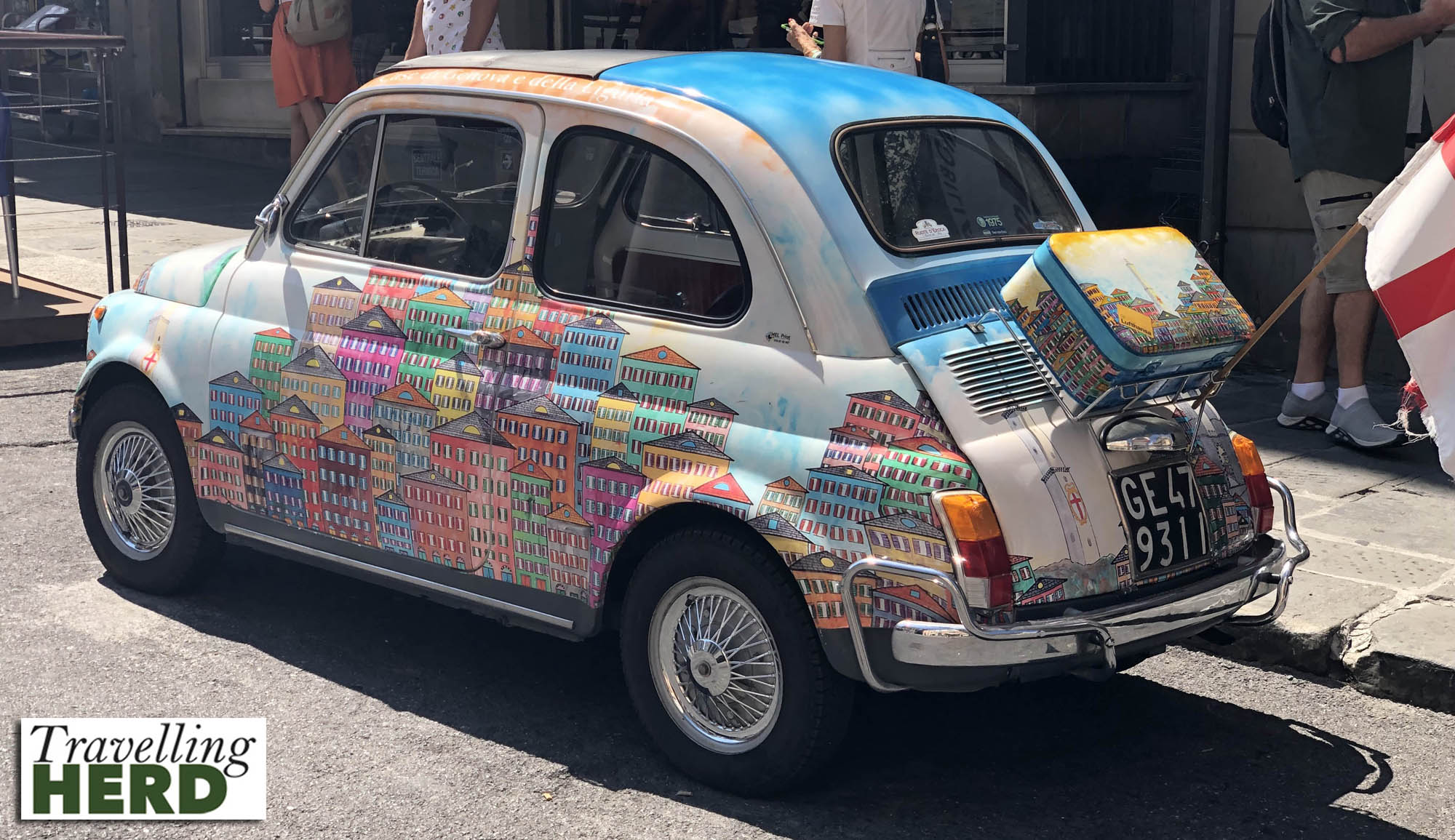
The Chiesa Di San Pietra in Bianchi is reached via some unprepossessing steps but is a fine decorative church which shuts for lunch and we were lucky to be some of the last people admitted before it closed for a siesta.
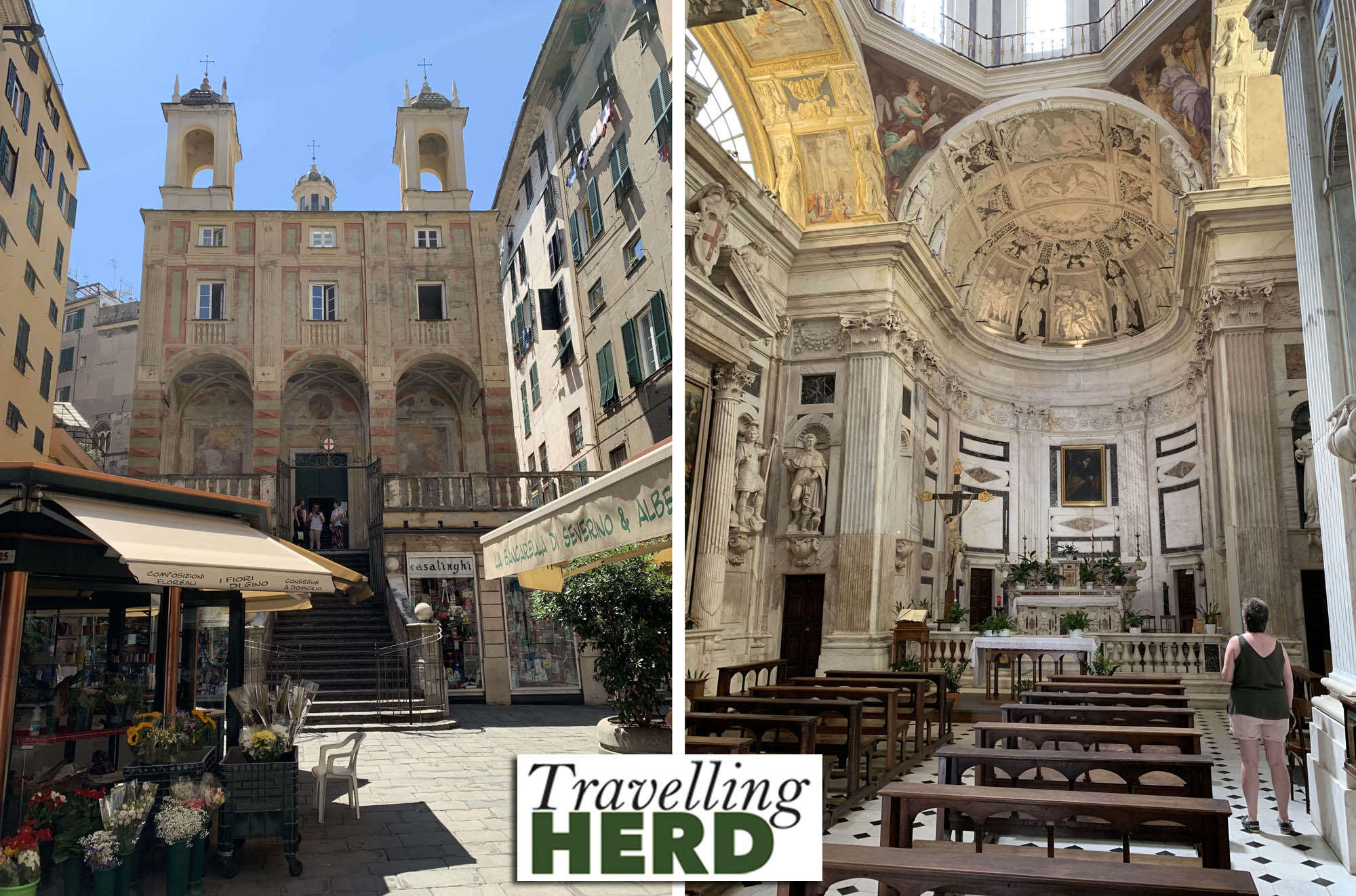
We then needed to replace lost fluids before continuing on our way.

Our route to the Palazzo Royale took us past the Basilica Della Santissima Annunziata del Vastato, so named because the area was “devastated” in the past and the houses demolished for defensive reasons.

The baroque interior is, once again, quite exquisite.
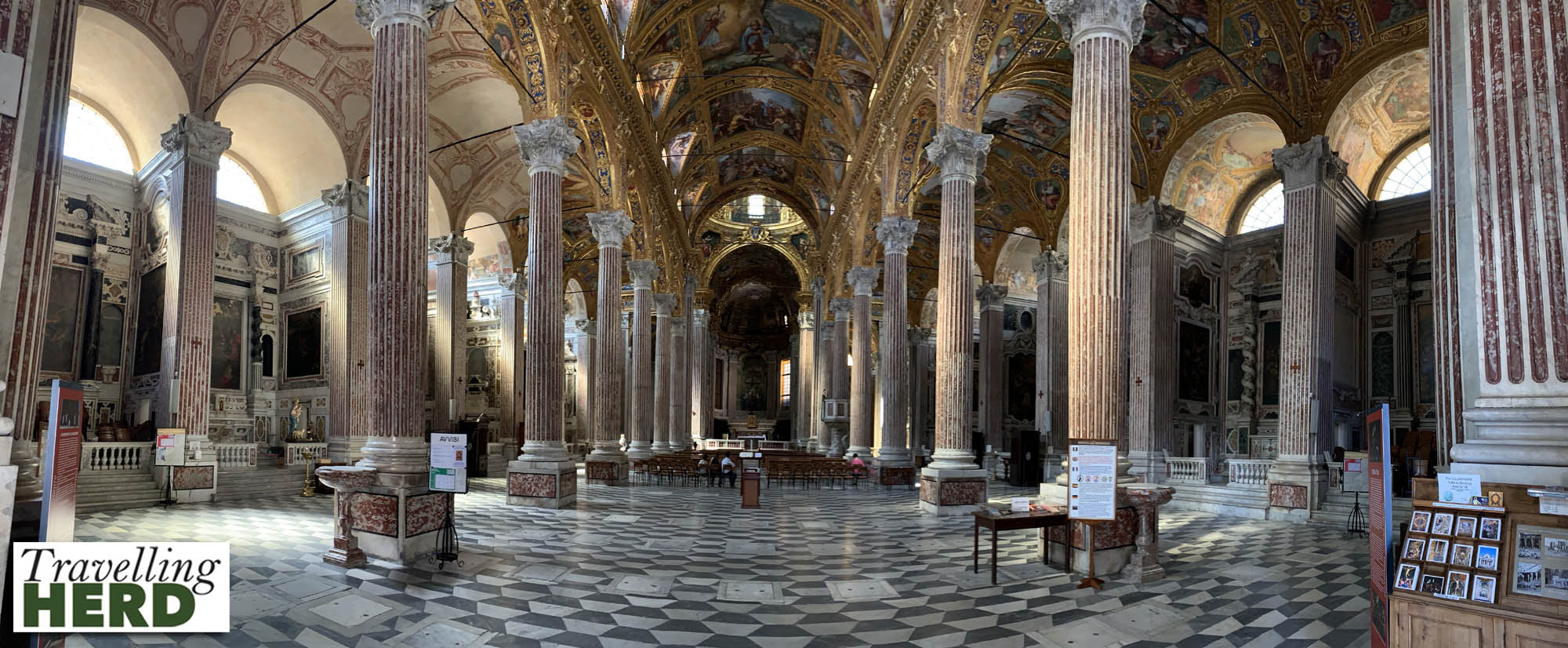
The Palazzo Royale is a another UNESCO World Heritage Site and is, quite simply, stunning. From an unassuming entrance which looks similar to the rest of the Strade Nuove. . .
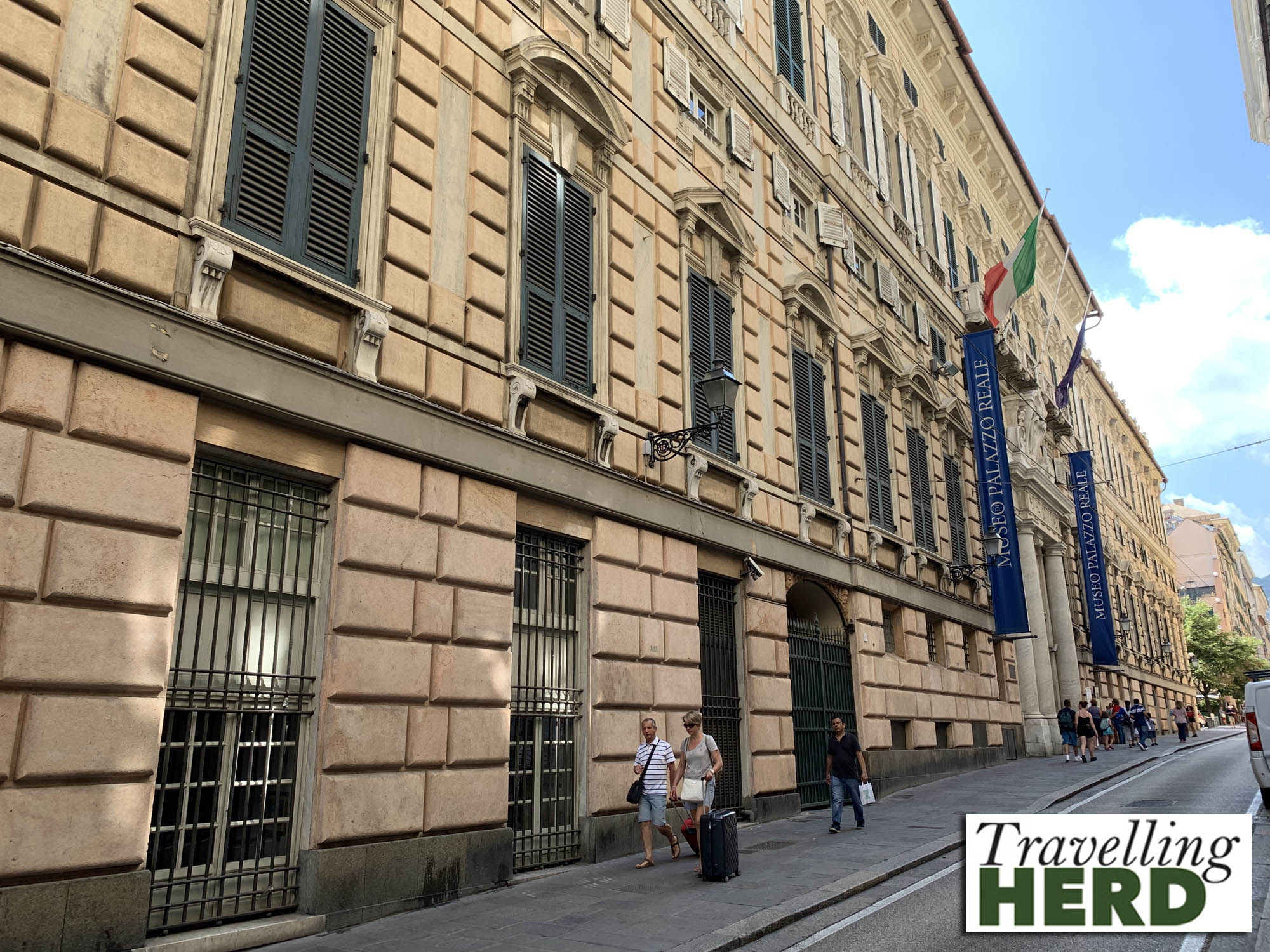
. . . you walk into a sumptuous interior . . .
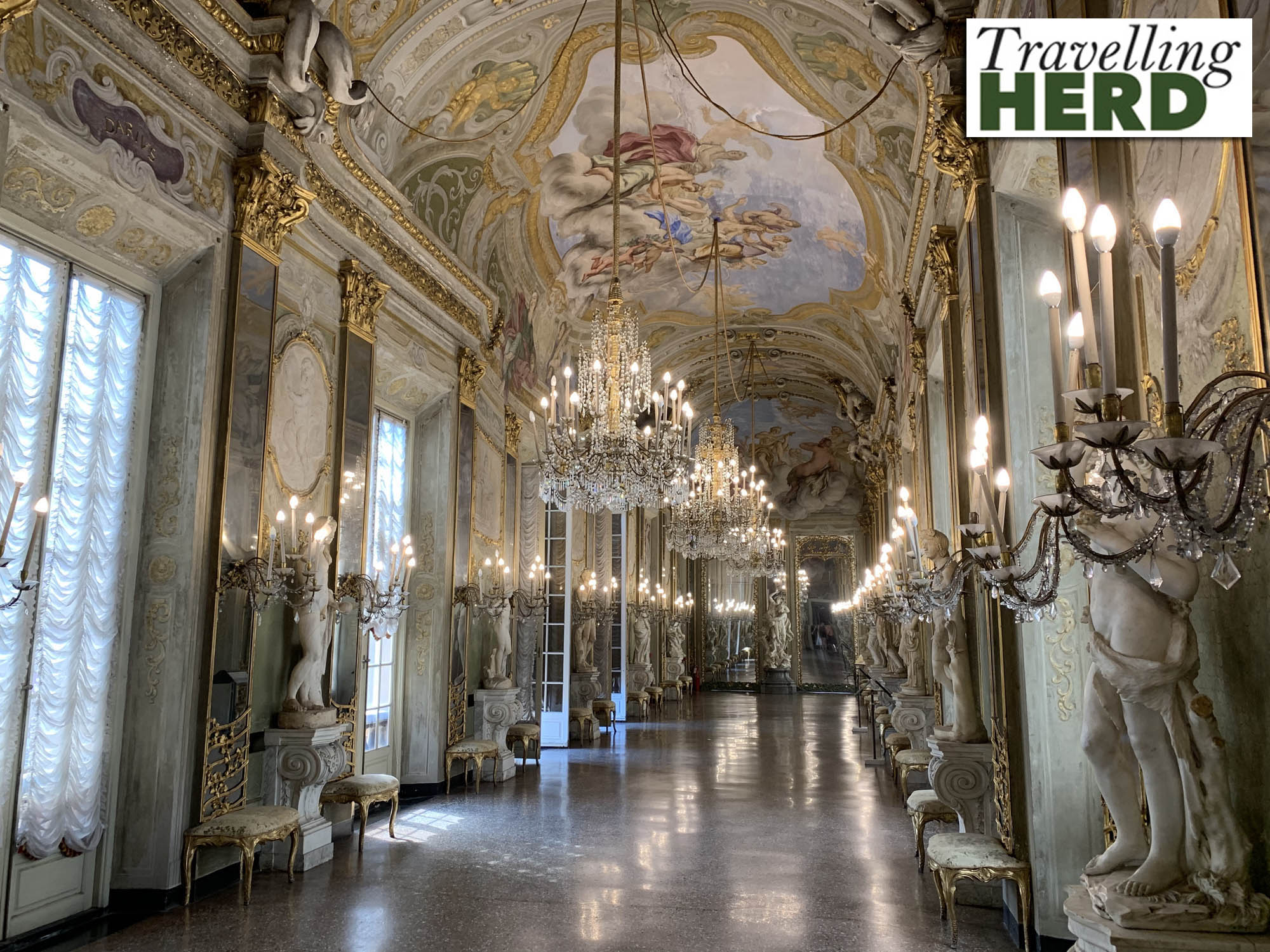
. . . complete with regal bedrooms . . .
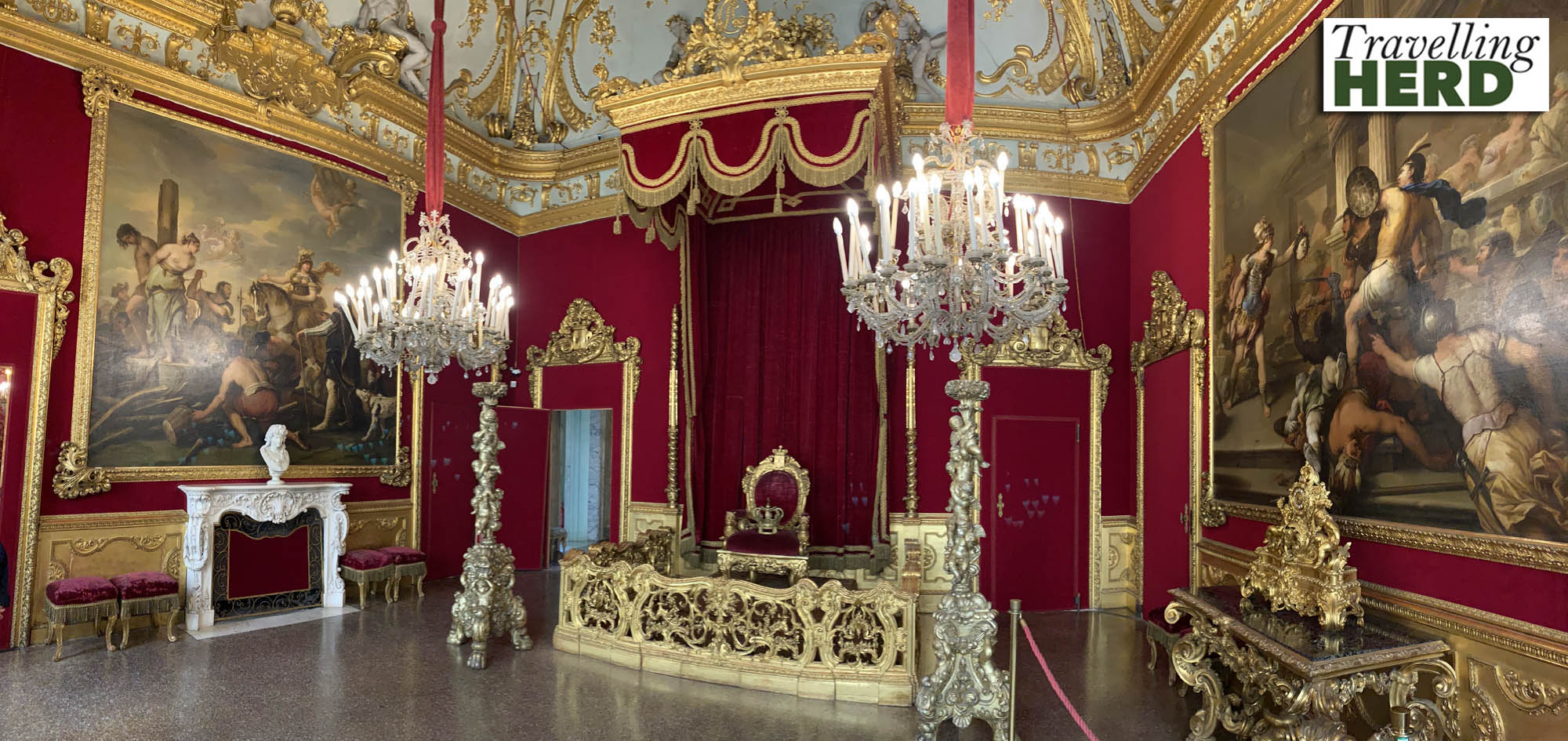
. . . courtyards. . .
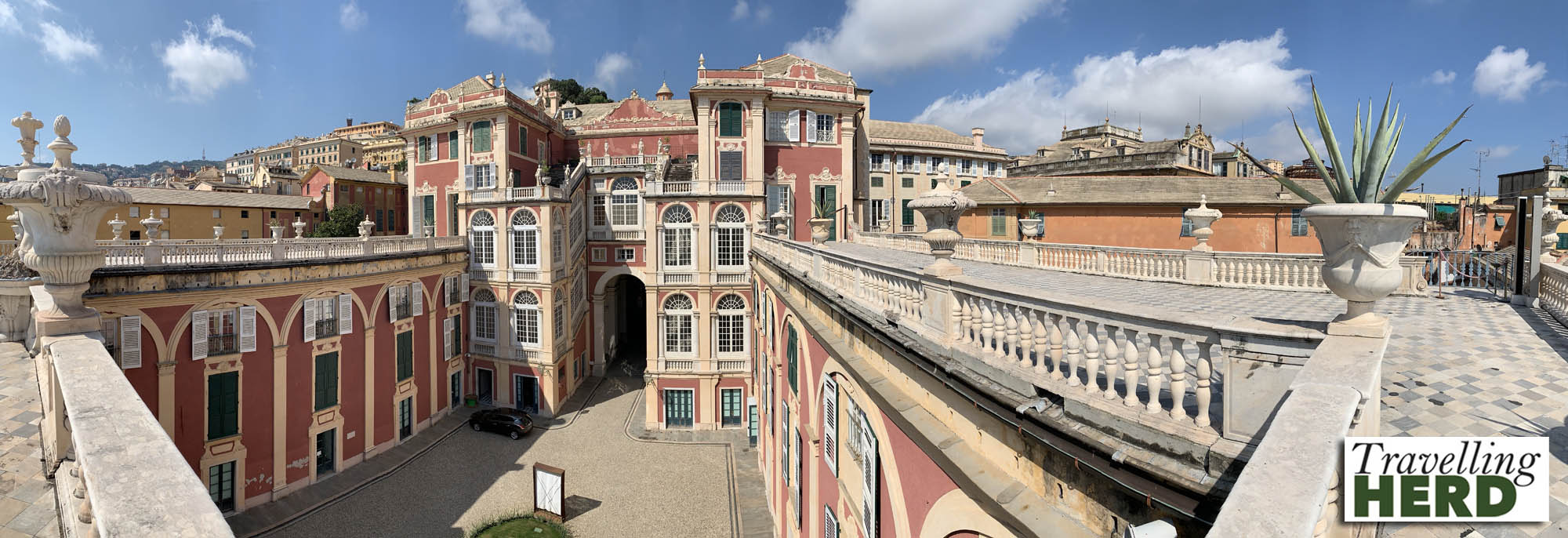
. . . and views across formal gardens to the harbour.
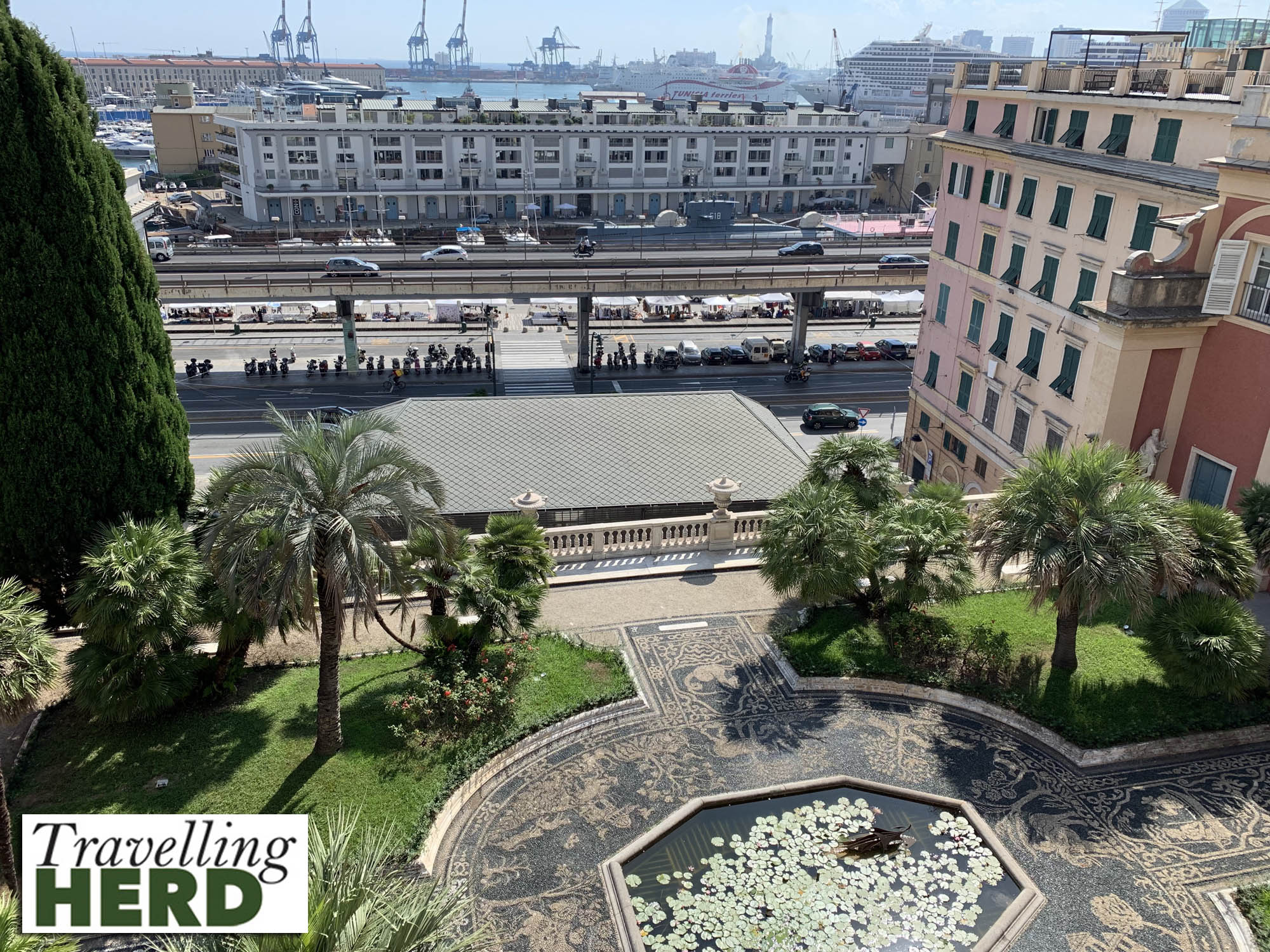
This is well worth the walk.

From here we returned to the harbour area in search of sustenance, as the sun was sinking in the sky.

There we found another hidden gem on the waterfront – the Chiesa Di San Marco al Molo – built in the thirteenth century this is one of the oldest churches in Genoa. It is a dedicated to the patron saint of Venice, Genoa’s historical rival for commercial dominance in the Mediterranean.
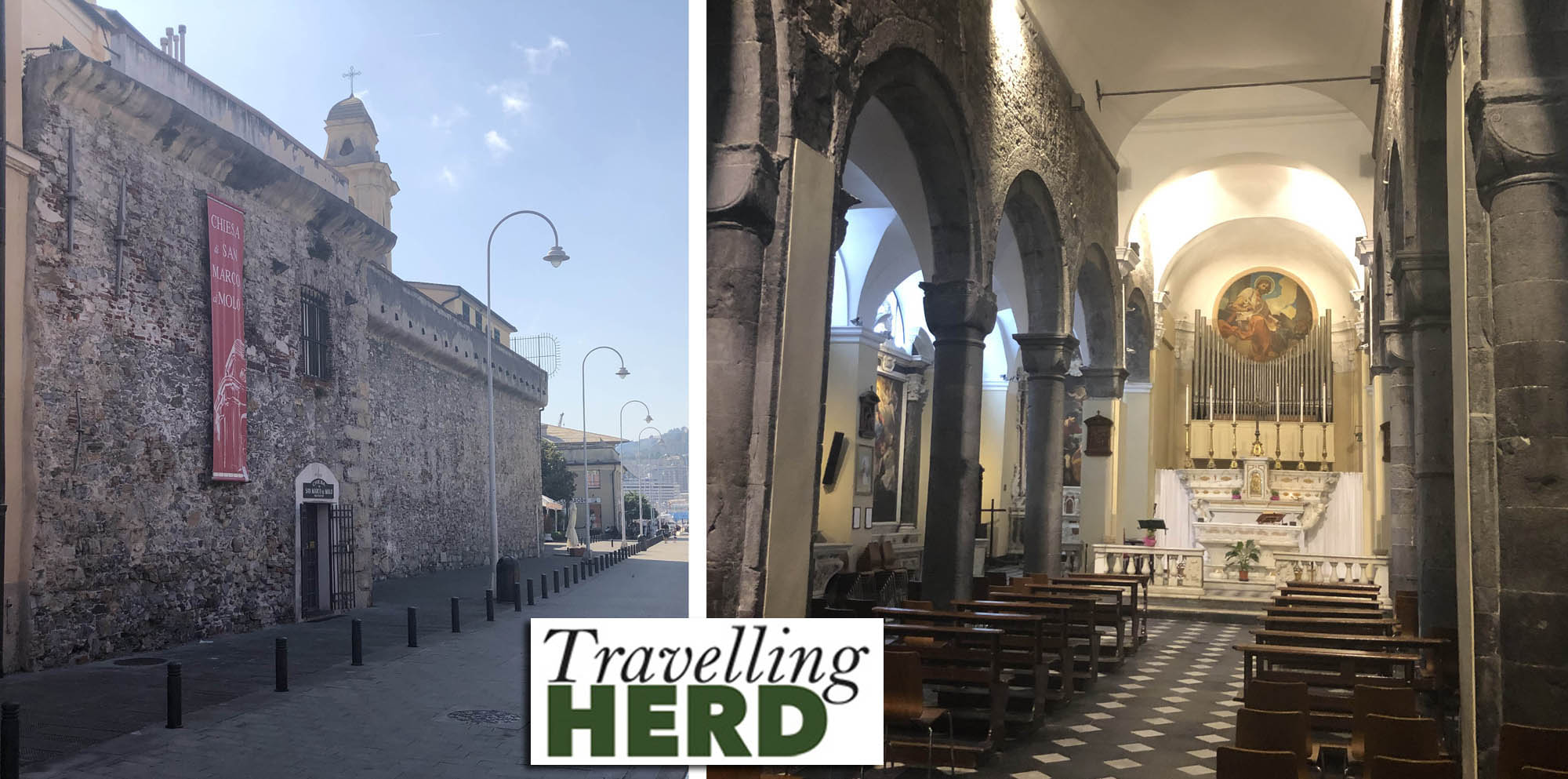
Our walk back to our hotel took us past another formal garden.

So, “What news of Genoa?”
Shylock, The Merchant of Venice: Act III, Sc i
Genoa is a city steeped in history and we have seen only a fraction of its beautiful sights, so we definitely need to return in the future to see more.
Route Map:

Video of the day:
Selfie of the day:

Dish of the day:
